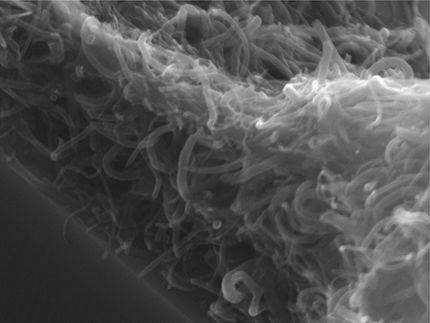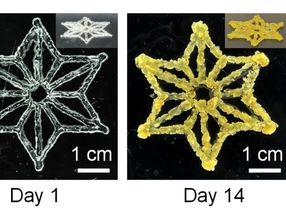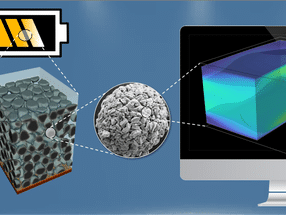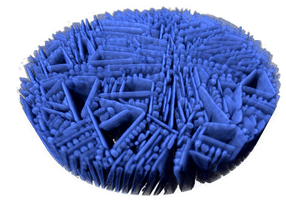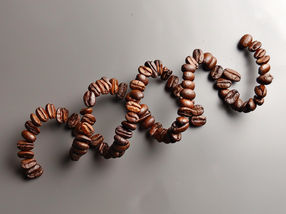Graphene foam gets big and tough
A chunk of conductive graphene foam reinforced by carbon nanotubes can support more than 3,000 times its own weight and easily bounce back to its original height, according to Rice University scientists.
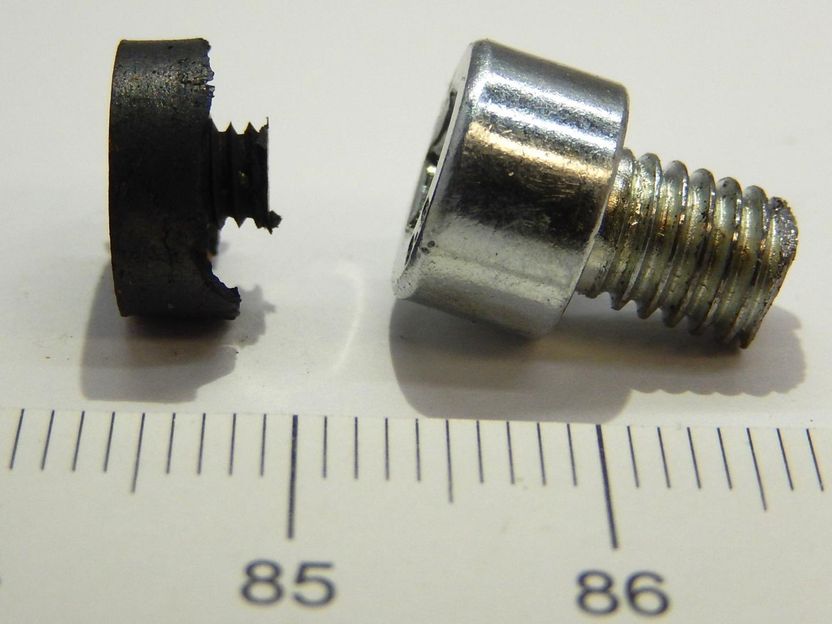
This macroscale piece of rebar graphene was formed into a screw shape. The highly conductive foam was tested as an electrode in lithium ion capacitors and found to be mechanically and chemically stable.
Tour Group/Rice University
Better yet, it can be made in just about any shape and size, they reported, demonstrating a screw-shaped piece of the highly conductive foam.
The Rice lab of chemist James Tour tested its new "rebar graphene" as a highly porous, conductive electrode in lithium ion capacitors and found it to be mechanically and chemically stable.
Carbon in the form of atom-thin graphene is among the strongest materials known and is highly conductive; multiwalled carbon nanotubes are widely used as conductive reinforcements in metals, polymers and carbon matrix composites. The Tour lab had already used nanotubes to reinforce two-dimensional sheets of graphene. Extending the concept to macroscale materials made sense, Tour said.
"We developed graphene foam, but it wasn't tough enough for the kind of applications we had in mind, so using carbon nanotubes to reinforce it was a natural next step," Tour said.
The three-dimensional structures were created from a powdered nickel catalyst, surfactant-wrapped multiwall nanotubes and sugar as a carbon source. The materials were mixed and the water evaporated; the resulting pellets were pressed into a steel die and then heated in a chemical vapor deposition furnace, which turned the available carbon into graphene. After further processing to remove remnants of nickel, the result was an all-carbon foam in the shape of the die, in this case a screw. Tour said the method will be easy to scale up.
Electron microscope images of the foam showed partially unzipped outer layers of the nanotubes had bonded to the graphene, which accounted for its strength and resilience. Graphene foam produced without the rebar could support only about 150 times its own weight while retaining the ability to rapidly return to its full height. But rebar graphene irreversibly deformed by about 25 percent when loaded with more than 8,500 times its weight.
Original publication
Most read news
Original publication
Junwei Sha, Rodrigo Villegas Salvatierra, Pei Dong, Yilun Li, Seoung-Ki Lee, Tuo Wang, Chenhao Zhang, Jibo Zhang, Yongsung Ji, Pulickel M Ajayan, Jun Lou, Naiqin Zhao, and James M. Tour; "Three-Dimensional Rebar Graphene"; ACS Appl. Mater. Interfaces; 2017
Topics
Organizations
Other news from the department science

Get the chemical industry in your inbox
From now on, don't miss a thing: Our newsletter for the chemical industry, analytics, lab technology and process engineering brings you up to date every Tuesday and Thursday. The latest industry news, product highlights and innovations - compact and easy to understand in your inbox. Researched by us so you don't have to.
